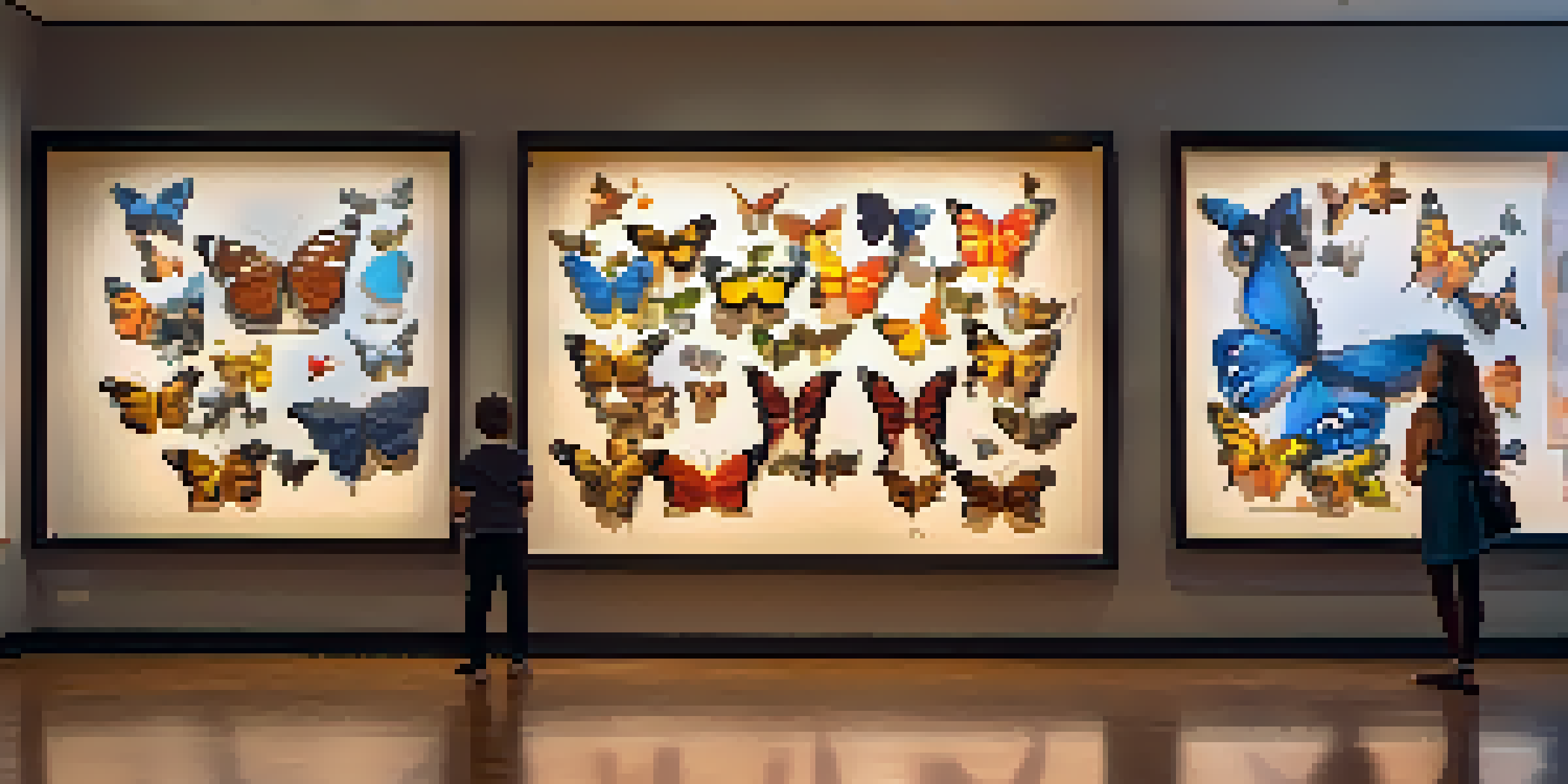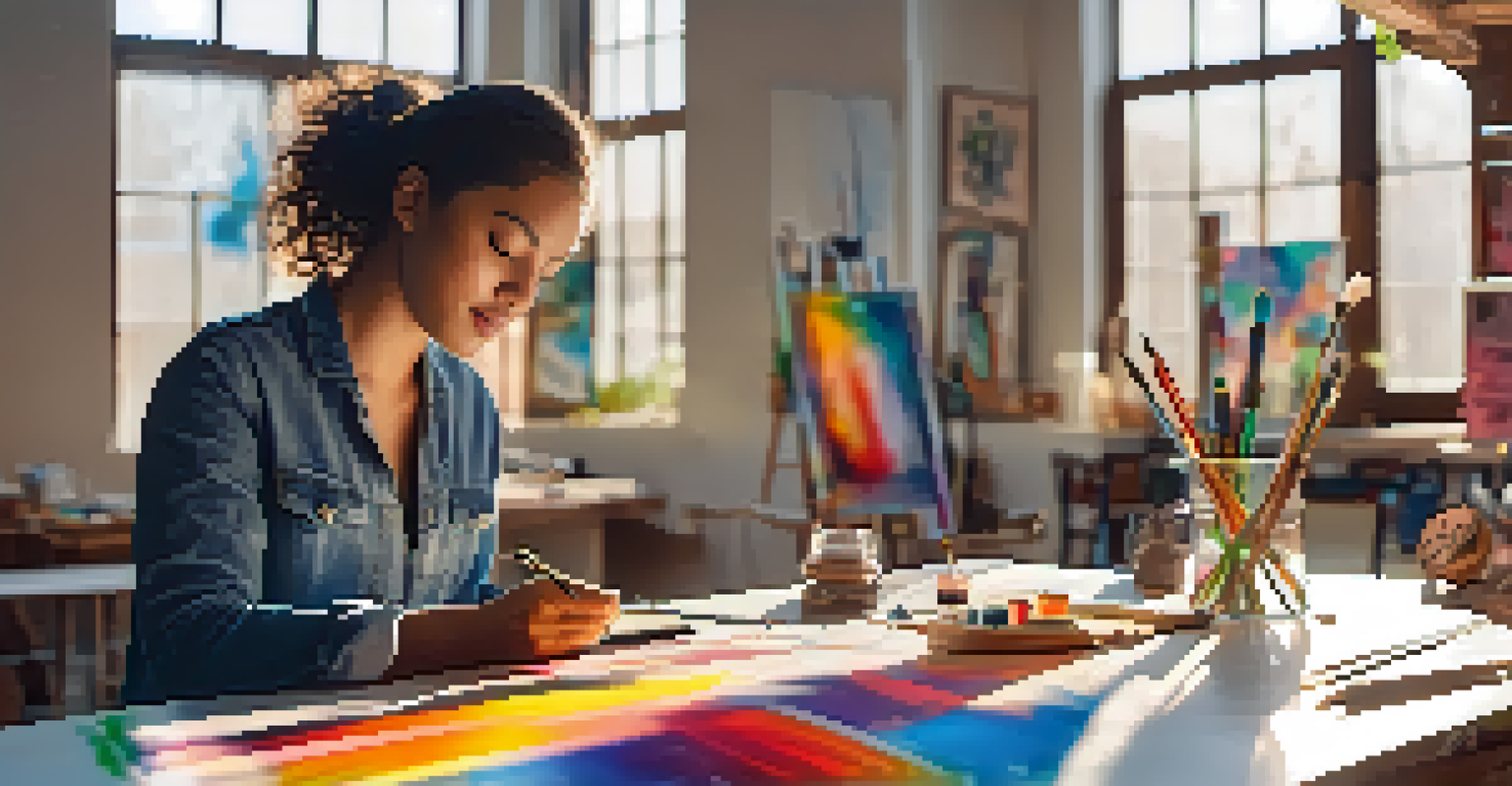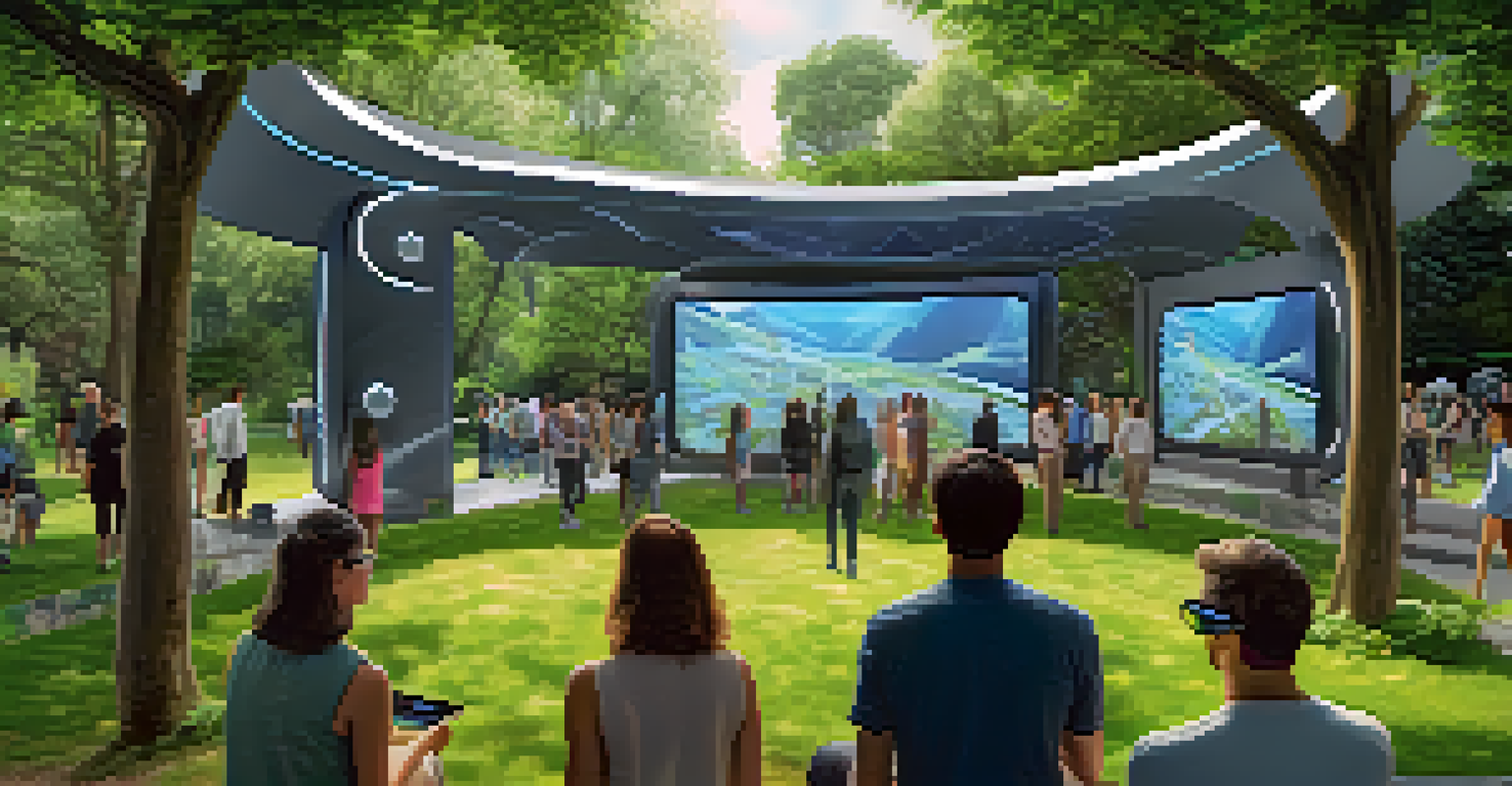Augmented Reality Art: Coding Experiences in 3D Environments

What is Augmented Reality Art?
Augmented Reality (AR) art merges digital creativity with the physical world, allowing artists to extend their work beyond traditional mediums. Imagine walking through a gallery and seeing a painting come to life with animations that interact with your movements. This innovative art form captivates audiences by offering immersive experiences that traditional art cannot provide. By overlaying digital elements onto real-world settings, AR art invites viewers to engage in new ways.
Art is not what you see, but what you make others see.
Artists utilize various technologies, such as smartphones and AR glasses, to create pieces that can transform any environment into an interactive canvas. For example, a simple sculpture might project a story or visual effects when viewed through a device. This merging of technology and creativity not only enhances the aesthetic appeal but also deepens the emotional connection between the viewer and the artwork.
As a growing field, AR art challenges conventional notions of space and interaction, prompting both artists and viewers to rethink how art is experienced. With the help of coding, these experiences can become even more dynamic and personalized, creating a unique journey for each audience member.
The Role of Coding in AR Art Creation
Coding plays a crucial role in bringing augmented reality art to life. Artists must often collaborate with developers to create software that allows their visions to be realized in 3D environments. This might involve using programming languages like JavaScript or platforms like Unity, which provide the tools needed to build interactive experiences. Think of coding as the foundation of a house; without it, the art simply wouldn't stand.

Through coding, artists can design how their digital elements interact with the physical world. For instance, a coded algorithm might dictate that a virtual butterfly only appears when a viewer stands in a certain spot. This level of interaction not only captivates viewers but also invites them to explore the artwork in a way that feels personal and engaging.
AR Art Merges Digital and Physical
Augmented Reality art combines digital creativity with the real world, offering immersive experiences that engage viewers in new ways.
Moreover, coding allows for continuous evolution of AR art. Artists can update their work remotely, adding new features or experiences, which keeps the audience coming back for more. As technology advances, the possibilities for what can be created are virtually limitless, paving the way for even more innovative artistic expressions.
Tools and Platforms for AR Art Development
Creating augmented reality art requires specific tools and platforms that cater to both artists and developers. Popular platforms like ARKit for iOS and ARCore for Android provide the necessary frameworks to build AR applications effectively. These tools come equipped with features that simplify the process of integrating digital content with the real world, making it accessible even to those new to coding.
The best way to predict the future is to create it.
Additionally, platforms like Unity and Vuforia enable artists to create rich 3D environments where their art can thrive. Unity, in particular, offers an intuitive interface that allows users to visualize their ideas in real time. This means artists can see how their creations will look and interact with the environment before finalizing their work, ensuring a smoother creative process.
Some artists also turn to web-based solutions, such as A-Frame or Spark AR, which allow them to create AR experiences directly in their browsers. This democratization of AR art tools means that anyone with a creative vision can explore the medium, regardless of their technical background. As these tools evolve, the potential for new and exciting artistic expressions continues to grow.
The Impact of AR Art on Viewers
The impact of augmented reality art on viewers is profound, as it fosters a more interactive and engaging experience compared to traditional art forms. Viewers are no longer passive observers; they actively participate in the artwork, leading to a deeper emotional connection. This participation might involve moving around the piece, interacting with digital elements, or even contributing to the artwork's evolution.
For instance, some AR art installations allow viewers to manipulate the digital content through gestures or voice commands. This level of interactivity not only captivates the audience but also cultivates a sense of ownership over the experience. Each viewer's journey becomes unique, as they explore and interact with the artwork in their own way.
Coding is Essential for AR Art
The role of coding is crucial in AR art development, allowing artists to create interactive experiences that evolve based on viewer interactions.
Moreover, AR art can break down barriers between the artist and the audience. By inviting viewers to engage and interact, the art becomes a collaborative experience rather than a one-sided display. This shift in dynamics is reshaping how we perceive art, making it more inclusive and participatory.
Challenges in AR Art Development
While augmented reality art is an exciting frontier, it does come with its own set of challenges. One major hurdle is the accessibility of technology; not everyone has access to the devices required to experience AR art. This disparity can limit the reach of an artist’s work, making it crucial to find ways to create inclusive experiences that can be accessed by a broader audience.
Another challenge lies in the complexity of coding and technology. Artists who are not familiar with programming may feel intimidated by the technical aspects of AR development. This can lead to a reliance on developers, potentially stifling the artist's original vision. However, as user-friendly tools continue to emerge, this gap is slowly closing, allowing artists to take more control over their creations.
Lastly, there’s the issue of content saturation. As AR art becomes more popular, the market may become oversaturated with similar experiences. Artists need to find ways to differentiate their work and provide unique perspectives, ensuring that their art stands out amidst the growing competition.
Future Trends in Augmented Reality Art
The future of augmented reality art is filled with exciting possibilities, as technology continues to advance at a rapid pace. One trend to watch is the integration of Artificial Intelligence (AI) into AR art experiences. Imagine an artwork that learns from viewer interactions and evolves over time, creating a truly personalized experience for each person who engages with it.
Additionally, as 5G technology rolls out, the potential for more seamless and immersive AR experiences will become a reality. Faster internet speeds will enable more complex interactions and reduce latency, allowing for richer storytelling within AR art. This technological enhancement could lead to entirely new forms of artistic expression that we can only begin to imagine.
AR Art Fosters Viewer Engagement
Augmented Reality art transforms viewers from passive observers into active participants, enhancing emotional connections and collaborative experiences.
Lastly, the growth of social media platforms that support AR filters and effects is likely to encourage more artists to experiment with this medium. As audiences become accustomed to engaging with AR on a daily basis, the demand for innovative AR art experiences will rise, pushing artists to continually evolve their practices and concepts.
Conclusion: Embracing the Future of AR Art
As we move forward into an increasingly digital world, augmented reality art offers an exciting avenue for creativity and expression. It challenges artists to think outside the box and explore new ways of connecting with their audiences. By embracing coding and technology, artists can create immersive experiences that resonate deeply with viewers, making art more interactive and engaging than ever.
Moreover, the collaborative nature of AR art—between artists, developers, and audiences—opens up new possibilities for artistic exploration. This synergy can lead to groundbreaking works that push the boundaries of what art can be, fostering a vibrant community of creators and enthusiasts alike.

In conclusion, augmented reality art is not just a trend; it’s a transformation in how we create and experience art. As technology continues to evolve, so too will the opportunities for artists to innovate and inspire, paving the way for a future where art knows no bounds.